The Bargello Museum is located in the historic center of Florence, at the heart of the imposing Palazzo del Bargello.
Since 1859, it has been the first national museum of unified Italy. It houses an exceptional collection of Renaissance sculptures and major works by artists such as Donatello, Verrocchio, Michelangelo, Giambologna, Andrea and Giovanni della Robbia, as well as Cellini. Over time, the collections have been enriched with bronzes, enamels, medals, seals, ivories, tapestries, and furniture, some of which come from the prestigious Medici collections.
Highlights at the Bargello Museum: Famous Works
- Donatello’s Bronze David (c. 1440), the first full-size male nude statue of the Renaissance.
- Donatello’s Saint George (1416), a masterpiece of late Gothic sculpture.
- Michelangelo’s Bacchus (c. 1496-1497), one of the artist’s first major works.
- The Competition for the Baptistery Doors: bronze panels by Ghiberti and Brunelleschi (1401).
- The glazed terracotta sculptures of the della Robbia, typical of the Florentine tradition.
- Bronzes and Mannerist works by Giambologna and Benvenuto Cellini.
Historical Overview and Palace Visit
Construction of the Bargello Palace began in 1255. Over the centuries, it served as the seat of the Captain of the People (podestà, a kind of mayor), the Council of Justice, and then the Captain of Justice (a role similar to a sheriff). From the 16th century and for nearly three hundred years, the building was used as a prison.
Between the 14th and 15th centuries, the building underwent several modifications and expansions. However, it retains its original sober and austere appearance, with its inner courtyard featuring elegant lines, its balcony, and its large first-floor hall.
The palace façade still preserves many heraldic decorations, including the coats of arms of the podestàs who governed the city between the 13th and 14th centuries. Beyond the entrance, visitors access an irregular courtyard adorned with coats of arms and symbols of Florence’s districts, as well as 16th-century statues. The entrance hall displays Gothic and 14th-century sculptures, notably works by Nicola Pisano.
Collections to Discover
- Michelangelo and Cellini Rooms: here you can admire masterpieces such as Bacchus (c. 1496-1497), Apollo (c. 1530), and the bronze bust of Cosimo Ist by Benvenuto Cellini. Works by Giambologna and other late Renaissance masters are also displayed.
- The Loggia, accessible via the monumental staircase, presents various 16th-century animal bronzes.
- Donatello Hall (former Sala del Consiglio Generale): it houses the famous Saint George (1416), the marble David (1408), the Infant Saint John the Baptist, as well as many other works by the master. The room also preserves the renowned bronze panels by Lorenzo Ghiberti and Filippo Brunelleschi, created during the competition for the Florence Baptistery doors (1401), in which Ghiberti emerged victorious.
- Decorative Collections: the museum also preserves enamels, goldsmithing, and metal objects from the Middle Ages and Renaissance, rare ivory sculptures, and magnificent della Robbia glazed terracottas.
- Sala della Torre displays several tapestries, as well as works by artists such as Michelozzo, Pisanello, and others.
Practical Information, Tickets, and Links
Practical Information
- Address: Via del Proconsolo, 4, 50122 Florence FI, Italy
- Opening Hours: open daily from 8:15 a.m. to 1:50 p.m. (closed on the second and fourth Sunday of the month, and the first, third, and fifth Monday of the month).
- Tickets: full price approx. €8, reduced €2 (check the official website). Reservation recommended during high season.
- Official Website: Museo Nazionale del Bargello
Bargello Museum FAQ
- How much time should be allocated for the visit?
About 1.5 to 2 hours are enough to see the main rooms and masterpieces. - Can tickets be purchased in advance?
Yes, booking is recommended, especially during high season, to avoid waiting.
Links and Sources
- Official website of the Museo Nazionale del Bargello
- Wikipedia – Bargello National Museum
- Visit Florence Museums – Bargello Museum info
- Visit Tuscany – National Museum Bargello
In the Florence Museums Category
- Museums in Florence
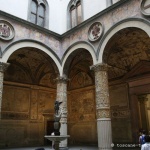 Florence, cradle of the Renaissance, is a true capital of art ...
Florence, cradle of the Renaissance, is a true capital of art ... - Uffizi Gallery
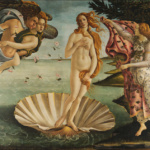 La Uffizi Gallery in Florence is one of the most famous ...
La Uffizi Gallery in Florence is one of the most famous ... - Palazzo Pitti, its museums and the gardens of Boboli
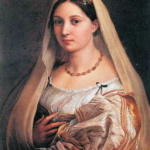 Palazzo Pitti is one of the largest buildings in Florence and ...
Palazzo Pitti is one of the largest buildings in Florence and ... - Gallery of the Academy of Florence
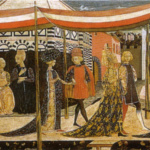 The Gallery of the Academy (Galleria dell’Accademia in Italian) is one ...
The Gallery of the Academy (Galleria dell’Accademia in Italian) is one ... - National Archaeological Museum of Florence
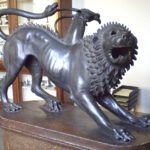 Located in the Palazzo della Crocetta, the National Archaeological Museum of ...
Located in the Palazzo della Crocetta, the National Archaeological Museum of ... - Museum of Palazzo Vecchio
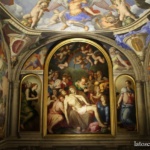 Palazzo Vecchio is a historic palace and museum. The interior rooms ...
Palazzo Vecchio is a historic palace and museum. The interior rooms ...



No Comments Yet